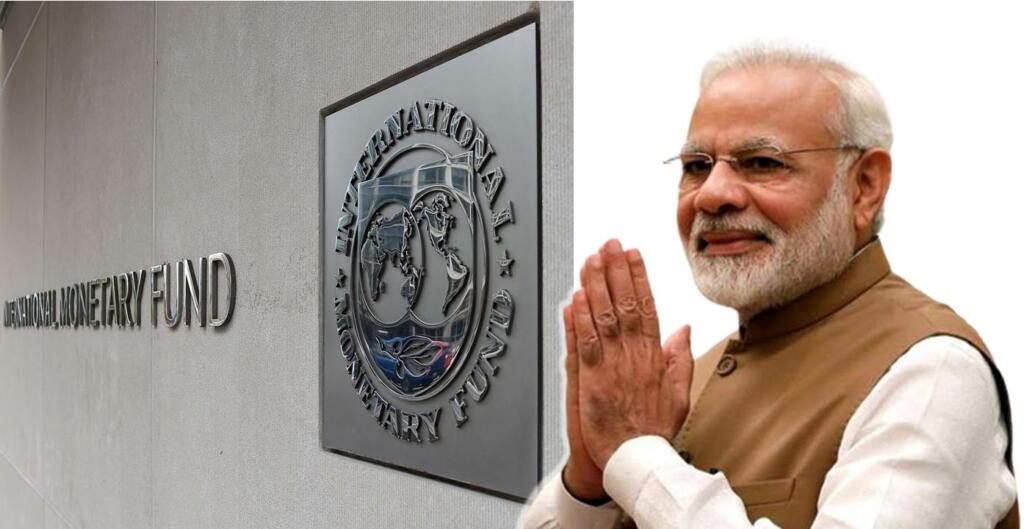- IMF has come out with its report about the effect of the Pandemic on poverty and Inequality in India
- The report categorically mentions that the Modi government’s food security scheme turned out to be a big boon for India
- The assurance of having enough food on the plate prevented Indians from reckless spending, which later turned out to be a turning point in India’s economic recovery
Ever since the nationwide lockdown kicked off in March 2020, the most glaring question which detractors raised before the Modi government was how would they feed millions of people. 2 years down the line, a report on India’s food security (PMGKAY) by the International Monetary Fund (IMF) has answered all concerns.
IMF applauds India
In its latest report about the welfare distribution mechanism, IMF has applauded India’s strategy during the Covid-19 pandemic. The report is titled Pandemic, Poverty, and Inequality: Evidence from India. The authors of the report went deep into the impact of PM Modi’s strategy of ensuring constant nutrition supply to Indians.
In March 2020, the Modi government had announced that it will be providing extra rations to more than 80 crore Indians. The food security scheme was named Pradhan Mantri Garib Kalyan Anna Yojana (PMGKAY). The PMGKAY scheme ensured that every needy person in the country would avail 5 kg of food grains per month. This extra ration was available to those who were already registered beneficiaries under National Food Security Act (NFSA).
PMGKAY helped in keeping extreme poverty under control
IMF has said that PMGKAY ensured that in spite of the loss in income due to lockdowns, Indians do not have to spend from their savings. This ascertained that the number of people living in extreme poverty in India did not escalate. According to the accepted standard, anyone earning less than $1.9 per day is categorized as a person living under ‘extreme poverty
When the Pandemic started, 0.8 percent of Indians were living in extreme poverty. The report states that it remained the same during the Pandemic year 2020, which is a big achievement for any country. “Pandemic support measures instituted by the government of India were critical in preventing any increase in the prevalence of extreme poverty.” the report stated.
Read more: IMF has predicted a continuous upward trajectory for the Indian economy
Views on Aadhar and Consumption
The report vindicated the point that Pandemic shock was largely a temporary income shock. The report also presented a comparative analysis of consumption during the UPA government and the Modi government. Stating that the Modi government performed better in increasing income and this consumption, the report said, “Consumption growth (an important determinant of poverty) was found to be higher in 2014-19 than the robust growth observed 2004-2011,”
The IMF report also emphasized how Aadhar based distribution has helped in reducing poverty. The authors argued that it has helped in preventing leakages which ultimately led to a decrease in the subsidy load on the government’s food basket. “We also note and document that food subsidies have reduced poverty on a consistent basis since the enactment of the FSA in 2013 and the co-incidental increase in the efficiency of targeting via the use of Aadhar”, said the report
Read more: 4.82 Crore Bogus Ration Cards canceled by Modi government
The dangers India faced due to Covid
Modi government’s PMGKAY not only provided food to the needy but also prevented the country’s economy from going down the rabbit hole. The biggest strength of the Indian economy is its consumer base. With more than 1.4 billion consumers, India is second only to China. But having a consumer base is not enough, they should have a constant income to be able to spend and drive demand.
Unlike Americans who rely on reckless spending, Indians are more interested in savings. So, when the Pandemic arrived and factories were shut down, a big problem loomed large on Indian consumers. It seemed as if their savings would wholly be spent on availing food. This meant that even if factories of other products would open, their market base would have been significantly reduced.
Food security kept India’s consumer spending thriving
That’s where the PMGKAY came into play. Through PMGKAY scheme, the Modi government effectively told Indians that they do not need to spend their savings on food. Instead, the government would take care of it. Other than Medical expenses, most Indians did not let their savings account go bankrupt. Later, when economic activity kicked in, these consumers (already having food security) went on a spending spree, providing wings to the Indian economy. The more Indians spent, the more factories were encouraged to increase their production, which ultimately led to a booming economy.
Read more: According to the recent Economic Survey, India witnesses unprecedented economic growth post-pandemic
The fact that a nation of 1.4 billion people did not go into a civil war for basic resources is good enough proof of the efficiency of the Modi government in managing the Pandemic. IMF report has just provided statistical backing to it.
